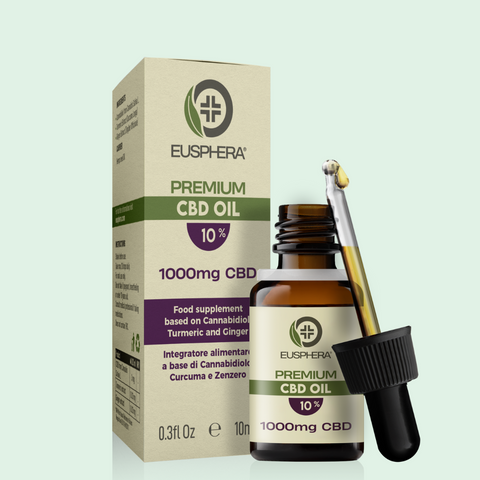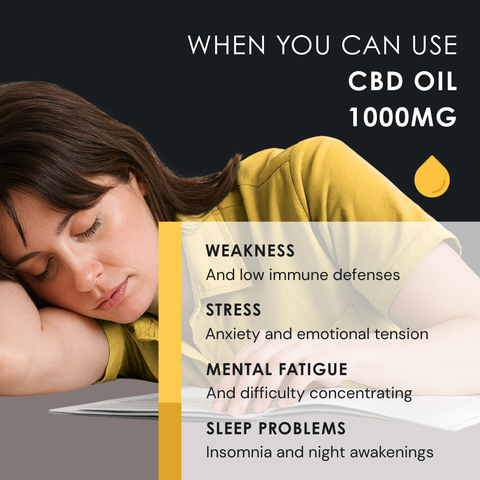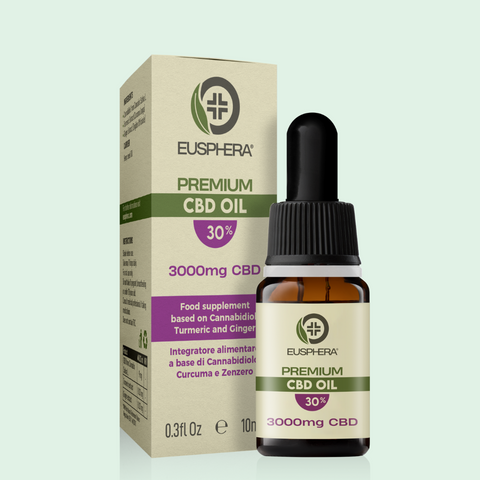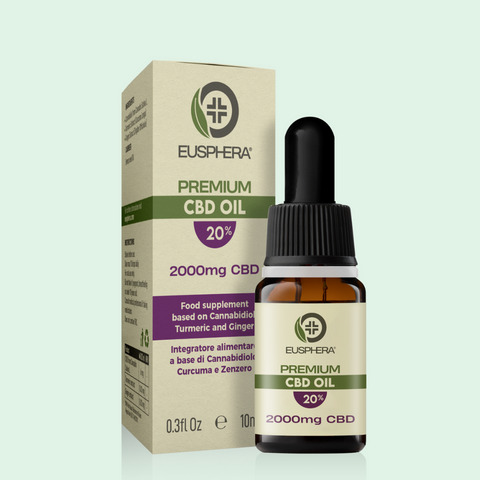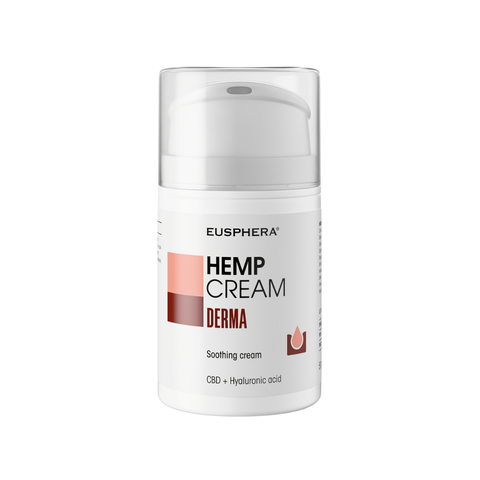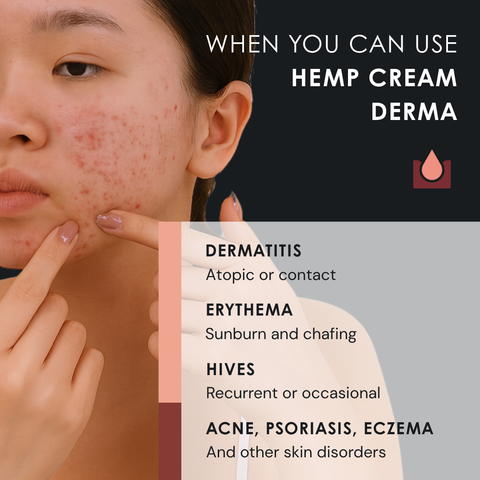In recent years, interest has grown toward cannabinoids, particularly CBD (cannabidiol), as potential adjuvants in the management of ADHD, thanks to new research trends and the advancement of studies on the endocannabinoid system and its interaction with neuromodulators such as dopamine, glutamate, and GABA. This introduction highlights the current context and the urgency of exploring alternative approaches in the presence of side effects from traditional treatments. Moreover, the recent 2025 systematic review highlights limited acute effects of CBD on patients with mental disorders, but with no evidence of lasting effects.
What is ADHD and how it manifests
ADHD (Attention Deficit/Hyperactivity Disorder) is a neurodevelopmental disorder characterized by persistent difficulties in attention, impulse control, and regulation of motor activity. It can appear as early as preschool age and often accompanies the individual into adolescence and adulthood. Although often perceived only as a behavioral issue, ADHD is recognized by the international scientific community as a clinical condition that can significantly affect academic, professional, and social life. In some regulatory contexts, ADHD is considered a disability, with the right to educational support and specific accommodations.
Causes of ADHD
ADHD is a neurodevelopmental disorder whose causes are not yet fully understood, and which involves multiple biological and environmental factors. Studies on ADHD brains show structural and functional differences in frontal areas and dopaminergic connections, confirming a neurobiological basis. Among the recognized factors we find:
- Genetic predisposition: research highlights high heritability, up to 75% in twins. Clinical studies show variants in genes encoding CB1 receptors in adolescents with ADHD (Lu et al., 2008), indicating a possible role of the endocannabinoid system.
- Neurobiological alterations: these concern dopaminergic transmission and the endocannabinoid system. According to research, variants in CB1 and CB2 receptors have also been associated with schizophrenia, depression, and bipolar disorder.
- Environmental factors: low birth weight (<1.5 kg), head trauma or brain infections, iron deficiency, exposure to lead, alcohol, tobacco, or cocaine during pregnancy. These factors can affect brain development, increasing the risk of ADHD.
- Early traumatic events: childhood abuse and stress can alter neuropsychological development and increase vulnerability.
- Other hypothesized factors: diet rich in food additives or simple sugars. Some authors have suggested that an unbalanced diet may worsen symptoms in sensitive children.
Main symptoms of ADHD
The symptoms of ADHD can change with age and life context. The three main aspects are:
- Inattention: difficulty concentrating, incomplete tasks, disorganization, frequent careless mistakes. In many cases, schoolwork appears chaotic and full of superficial errors.
- Hyperactivity: incessant movements, motor restlessness, excessive talking, inability to remain seated. In children, this manifests in the classroom or while playing with peers.
- Impulsivity: difficulty controlling reactions, frequent interruptions, poor ability to wait. Often leads to conflicts with teachers, parents, or employers.
In children, symptoms often appear at school and in social relationships, with consequences on learning. In adulthood, hyperactivity tends to diminish, giving way to internal restlessness, anxiety, mood swings, difficulty concentrating, and time management issues. Unsurprisingly, the question of whether ADHD is a disability is often raised in relation to the functional impact these symptoms have on daily life.
Disorders associated with ADHD
ADHD is often accompanied by other clinical and behavioral conditions, which complicate diagnosis and management:
- Anxiety and mood disorders: frequent episodes of depression and emotional instability.
- Insomnia and sleep disorders: difficulty falling asleep or irregular sleep, which worsen daytime inattention.
- Learning difficulties: problems in reading, writing, and arithmetic, affecting up to 60% of children with ADHD.
- Oppositional behaviors and risk of addictions: in adolescence and adulthood, impulsivity may lead to oppositional behavior toward authority and a higher risk of developing substance addictions.
- Autism spectrum disorders: in some cases, ADHD occurs alongside autistic traits, with a more complex clinical picture.
These comorbidities highlight the need for an integrated diagnostic and therapeutic approach, considering both traditional therapies and the possible role of CBD for ADHD in children or other cannabinoids as adjuvants, always under strict medical supervision.
How ADHD is treated
Therapeutic strategies for ADHD are based on a multimodal approach that combines psychoeducational and behavioral interventions with the possible use of psychostimulant medications.
- Behavioral therapy: conducted by psychologists specialized in developmental age, aims to improve self-regulation abilities, social skills and management of behavior at home and at school. According to international guidelines, it represents the first-choice treatment in preschool children.
- Pharmacological therapy: may include the use of psychostimulant or non-stimulant drugs.
Among psychostimulant drugs, methylphenidate and amphetamines remain the most prescribed and considered among the most effective for control of the main symptoms. This type of drug can involve common side effects such as insomnia, reduction of appetite, headache, abdominal pain, increase of heart rate and blood pressure. If used at high doses or for prolonged periods, they can affect growth and increase the risk of dependence.
Among non-stimulant drugs, atomoxetine is an alternative for patients who do not tolerate stimulants or present comorbidities (e.g. tics, anxiety). In some cases, drugs for hypertension (clonidine, guanfacine), antidepressants and anxiolytics are also used.
- Combined therapy: the combination of behavioral and pharmacological interventions is particularly recommended for school-age children with severe symptoms or with comorbidities, as it improves clinical response and reduces the necessity of high dosages of drugs.
- Cannabinoids as adjuvants of traditional therapies: clinical and observational studies suggest that cannabinoids (CBD and THC) may reduce symptoms such as impulsivity and inattention
Educational support
According to the Individuals with Disabilities Education Act (IDEA), public schools are required to guarantee a free and adequate education to children and adolescents with ADHD. Education must be provided in the most inclusive context possible, allowing students to interact with peers and to have access to the same school and community resources.
Cannabinoids and ADHD: what is the correlation?
As mentioned, the number of scientific evidence suggesting that the phytocannabinoids CBD and THC possess therapeutic properties useful for the treatment of ADHD is increasing. As with other mental disorders, such as anxiety, post-traumatic stress disorder (PTSD), obsessive-compulsive disorder, and autism spectrum disorders, clinical data indicates that cannabinoids can be truly valid therapeutic tools.
· A recent clinical study, the EMA-C trial (Experimental Medicine in ADHD-Cannabinoids), evaluated the effects of Sativex Oromucosal Spray (an antispastic drug containing cannabinoids and used for the treatment of Multiple Sclerosis) in 30 adults with ADHD (Cooper et al., 2017). This study showed that Sativex improved ADHD symptoms as it reduced the manifestation of typical ADHD symptoms such as hyperactivity/impulsivity and improved inattention.
· From another observational study involving 2,811 subjects, it emerged that people who did not use cannabis had a higher probability of having an ADHD diagnosis, suggesting that cannabinoids may have therapeutic potential for the treatment of ADHD.
Despite several preclinical and clinical studies suggesting that cannabinoid-based treatment may be a valid approach in the treatment of ADHD, the mechanism underlying the potential therapeutic effects of cannabinoids in this disorder is not yet known.
· It has been hypothesized that cannabinoids may enhance dopaminergic transmission, which is believed to be the main mechanism through which psychostimulants also reduce ADHD symptoms and improve patients’ cognitive performance.
· However, according to other studies, other mechanisms may be involved, including the modulation of cannabinoid receptors and the endocannabinoid system in general. An increasing number of studies conducted on preclinical models of ADHD seem to confirm this hypothesis, confirming what emerged from clinical studies.
CB1 and CB2 receptors, role of anandamide
The endocannabinoid system (ECS) regulates cognitive and emotional functions through CB1 receptors (prevalent in the brain) and CB2 receptors (more widespread peripherally). Alterations in CB1 receptors and in the production of anandamide (natural endocannabinoid) have been associated with ADHD and other psychiatric disorders.
Link between endocannabinoid system and dopamine/glutamate/GABA
Il The endocannabinoid system modulates several neurotransmitters:
- Dopamine: involved in reward and attention mechanisms, central in the pathogenesis of ADHD.
- Glutamate and GABA: regulate neuronal excitation and inhibition; their alteration can contribute to symptoms of hyperactivity and impulsivity. The interaction between ECS and these systems explains why cannabinoids may have therapeutic effects.
CBD for ADHD: methods of administration, dosages and medical monitoring
Cannabidiol (CBD) can be taken in different pharmaceutical or nutraceutical forms, each with different absorption times and bioavailability:
· Sublingual oil: drops placed under the tongue, with rapid absorption and easily adjustable dosage.
· Capsules or tablets: slower and more constant release, useful for those who need convenience and predefined dosages.
· Oromucosal spray: already used in some clinical studies, such as Sativex (containing CBD and THC), allows direct absorption through the oral mucosa.
· Other formulations under study: edibles, inhalation solutions, and transdermal patches, although there is no specific data on use in ADHD.
CBD dosages for ADHD
At present there are no official guidelines for the treatment of ADHD with CBD. However, clinical studies conducted on other neuropsychiatric conditions, such as autism, have used variable dosages from 1 to 10 mg/kg/day.
It is important to emphasize that individual needs can vary greatly depending on age, body weight, severity of symptoms, and the presence of other concurrent therapies.
Medical monitoring for the use of CBD for ADHD
Medical monitoring is fundamental and should include:
- evaluation of the clinical response to symptoms (attention, impulsivity, anxiety, insomnia);
- control of possible side effects: drowsiness, changes in appetite, gastrointestinal disorders, irritability;
- verification of drug interactions, since CBD can influence the metabolism of other drugs through liver enzymes (CYP450);
- particular attention in children and adolescents, where CBD use must occur only under strict specialist supervision.
Although some parents and patients report benefits from the use of CBD for ADHD in children, the scientific evidence remains preliminary. Therefore, any administration must occur exclusively under medical supervision, avoiding self-medication and preferring certified CBD-based products.
FAQ –Frequently asked questions about the use of CBD for ADHD
Is CBD effective for ADHD?
Current evidence is preliminary: some studies show improvements, but long-term confirmation is lacking.
Is CBD for ADHD legal in Italy?
CBD is legal if the THC content is less than 0.6%. However, it is not approved as a specific drug for ADHD.
Can I give CBD to a child with ADHD?
At present there is not sufficient scientific evidence: pediatric use must be evaluated and monitored only by a doctor.
Does the use of CBD for ADHD involve side effects?
CBD is generally well tolerated, but it can cause drowsiness, changes in appetite, gastrointestinal disorders, or interactions with other drugs.
